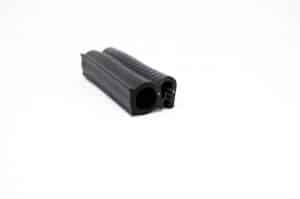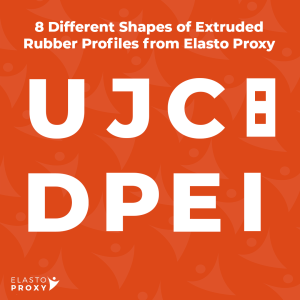Doug Sharpe
President of Elasto Proxy
Buyers and seal designers want the best of both worlds. Some materials are too hard. Others are too soft. Then there are compounds that seem to have the right combination of properties, but that can’t handle cold temperatures or that cost too much. Material selection can be challenging. So when new compounds hit the market, it helps to have a supply chain partner in your corner.
The Best of All Worlds
Thermoplastic elastomers (TPE) are a group of rubber-like materials that combine the processing strengths of thermoplastics with the best qualities of thermoset rubbers. As their name suggests, thermoplastics are temperature-sensitive plastics that become soft or even fluid when heated, and then harden when cooled. They can be molded into custom shapes ranging from check valves to coffee cups.
Thermoset rubbers are elastomers, pliable materials that can resume their normal shape after being stretched, twisted, or distorted. Think of a rubber band and you’re thinking of an elastomeric product. For buyers and product designers who want the best of both worlds – or maybe the best of all worlds – TPEs or thermoplastic rubbers (TPR) may be the right choice.
TPE vs. Rubber
TPE has a higher material cost than other rubbers, but is cost-effective for small runs because it cures right away. Since thermoplastic elastomers are also 20% lighter than other types of rubber, TPE shipping costs are lower, too. If “cleaner and greener” is part of your company’s philosophy, you’ll like that scrap TPE is fully recyclable. This novel material has lower extruding temperatures, can produce profiles in any color, and is more elastic. TPE profiles such as window seals and door seals are also easier to install.
TPE vs. Plastic
Thermoplastic rubbers also offer advantages over polyvinyl chloride (PVC), a popular plastic that’s often used in place of metals or even wood in construction products. Flexible and pliable, TPE is less likely to break, especially in cold temperatures. In addition to its shape memory and lower thermal conductivity, TPE can be used in expansion joints. According to one supplier, TPE can expand to 800 times it original size within 48 hours.
Potential Drawbacks
Is TPE the right choice for every application? Of course not! There are issues with bendability in corners. There are also problems with form-curing TPE profiles, and excessive flash when welding frames. Because of their higher material costs compared to other rubbers, thermoplastic elastomers might not cost-effective for some high-volume runs.
So how can you tell if TPE is right for your application? For starters, choose a partner and not a provider. Ask your sealing supplier to listen to all of your requirements and to analyze all of your needs. Remember, too, that Elasto Proxy is here to help.










